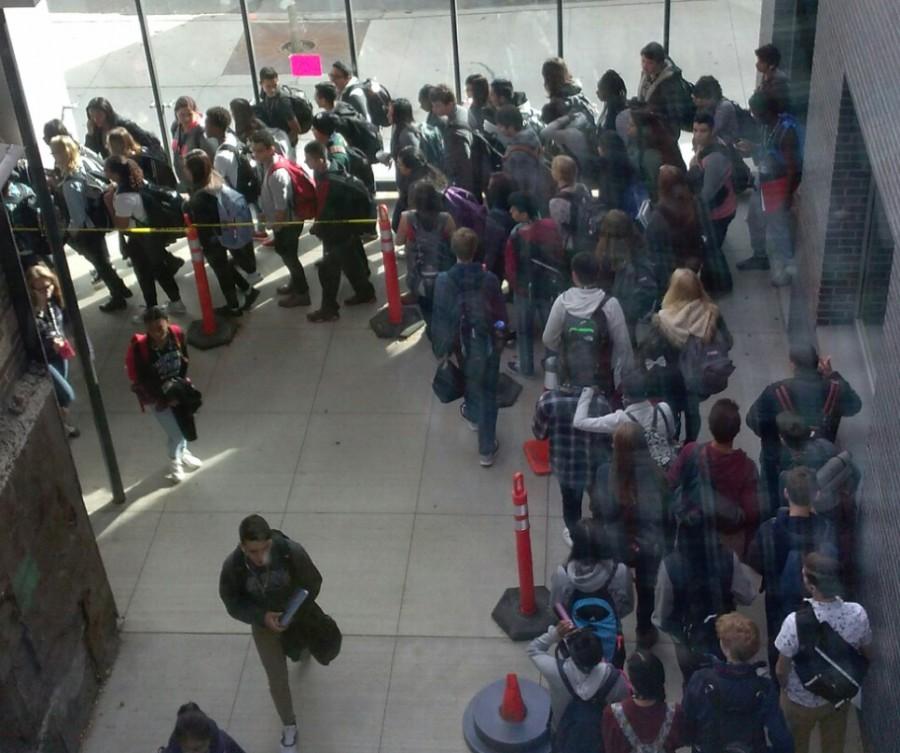Traffic Jams May Not Be As Inevitable As You Think
The three-point traffic of the inter-building link demonstrated. Are the cones really effective?
Apparently common sense is still stuck in traffic.
Traffic is worse this year. This is undeniable. This is not entirely unexpected, however, as Jones took in far more students this year than graduated last year. But the massive traffic jams in the link between the north and south campuses that have sprung up suddenly, pictured to the right, are unprecedented, and unacceptable.
With next year’s intake and outtake levels expected to be similar to this year’s, it seems traffic will only get worse. And maybe that’s just the way of things, maybe there is just no better way way to get so many people through such a small space.
However, I can think of a least two things that Jones’ administration can try that will, at the worst, be ineffective, and at the best, severely cut down on traffic between buildings next year.
The most glaring way in which administration could accomplish this is to tweak room assignments slightly. Almost every social sciences class is located on the second or fifth floor of the north campus. In fact, almost every department is grouped closely together. This seems like a change for the better, right? Well, unfortunately, it’s only made things worse.
For teachers, stacking a floor with a single department can cause some ad hoc room assignments. Sociology, taught by Frank Fitzpatrick, is held in the former choir room in the north campus. This room was never designed for traditional, forward-facing, academic classes, like many others on the north campus’ second floor. What’s next? will teachers have to shout at the top of their lungs to fill the north campus auditorium? Good luck to all the students who’ll have to endure finals in the close confines of the former band room, without even a desk to write on. Surely there is a way that the administration can better assess the resources of each classroom, and match them to the needs of each class.
For students, this arrangement means that all students in a certain department in a certain period will be heading to the same area of the school at the same time. This doesn’t slow things down too much in the massive open spaces of the south campus, but in the tight corridors of the north campus, and the inter-campus space in which traffic from three directions meets, near-gridlock ensues every day. Why not put a less commonly enrolled department in the north campus for next year, or schedule more creatively, to distribute students across the building more evenly during each passing period, or keep underclassmen classes and one building, and upperclassmen classes in the other?
Despite all these obvious solutions, administration’s current response to the problem at large seems to be limited to a couple traffic cones, which divide the space the link into two lanes. But, as shown in the above photo, the cones are not placed proportionately to the amount of traffic each side receives. The far less-trafficked north to south side has the majority of space, squeezing the south to north side into a bottleneck. Yes, certainly the other side experiences more traffic at certain times of the day, but the security guards stationed between buildings can easily adjust the cones to provide more room for whichever side is experiencing more traffic, yet it is lost on our administration.
The bottom line is this: Jones’ administration must tweak the classroom assignments and adjust the structure of traffic lanes in the inter-building link, or else we’ll all have to grow considerably more tolerant of tardies.



